Introduction to Senecio Haworthii
Welcome to the world of Senecio Haworthii, affectionately known as the Woolly Senecio or Cocoon Plant. This enchanting succulent is a treasure trove of texture and form, with its irresistibly fuzzy leaves that coax you into a tactile adventure. For those who are drawn to the unique and the visually delightful, this South African native offers a fluffy aesthetic unlike any other in the succulent realm.
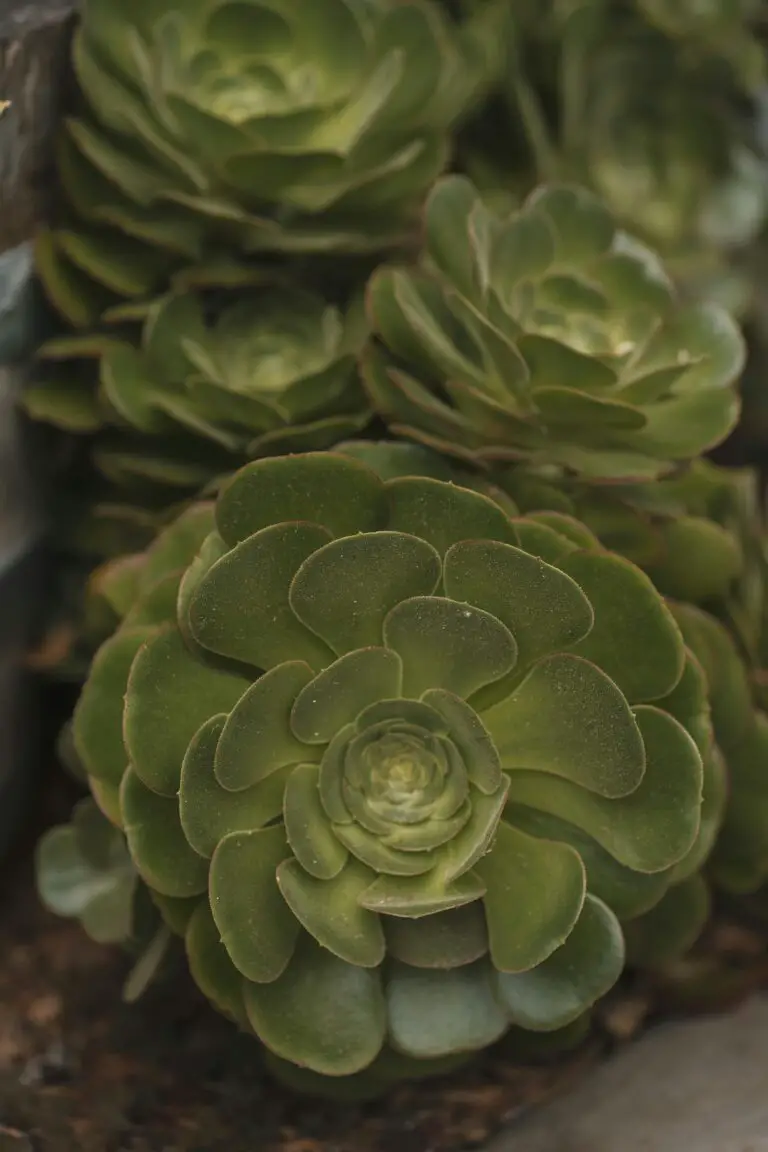
Imagine a plant that looks like it’s just been dusted with a sprinkling of snow, even in the peak of summer. That’s the bewitching charm of the Woolly Senecio. Their thick, cylindrical foliage is enveloped in fine white hairs, an adaptation that speaks volumes about its survival mechanism—a botanical marvel protecting it from harsh sunlight and preserving precious moisture.
For gardeners, the Woolly Senecio is more than just a plant; it’s a living sculpture that demands attention and ignites conversation. Whether nestled among other vibrant succulents or standing solo in a modern, minimalist pot, Senecio Haworthii makes a statement that’s hard to ignore. And it’s not just about looks; this succulent is a formidable survivor, with a preference for bright, indirect light and a forgiving nature when it comes to watering—perfect for those seeking beauty without the high maintenance.
And if you’re curious about how to nurture these woolly wonders, you’re in luck. There are ample resources to guide you on your succulent journey, like comprehensive care guides that unlock the secrets to flourishing Senecio Haworthii. But we’re just getting started here. Dive in deeper, and you’ll discover the myriad ways to incorporate this quirky plant into your life and interiors. It’s time to embrace the plush, cottony charms of Senecio Haworthii and let it transform your space with its unique allure.
If you’ve fallen for the Cocoon Plant and thirst for more succulent wisdom, don’t miss our ultimate guide to creative succulent arrangements where inspiration blooms and the possibilities for plant artistry are endless.
Choosing the Perfect Environment
When it comes to nurturing your Senecio Haworthii, also known as the Cocoon Plant or Woolly Senecio, credentials in picky tenancy need not apply. This stoic succulent hails from the arid deserts of South Africa, but let’s help it thrive far from its sunbaked homeland, shall we?
First off, light. Oodles of it! Think bright, like a sunlit nook that plays peekaboo with the sun for most of the day. Your Senecio Haworthii’s a photophilic little creature – more sunlight leads to better growth, denser white hairs, and that understated pomp we all adore. But be warned, the scorching midday sun is a no-go. A morning sunbath by your east-facing window, and it’s all good.
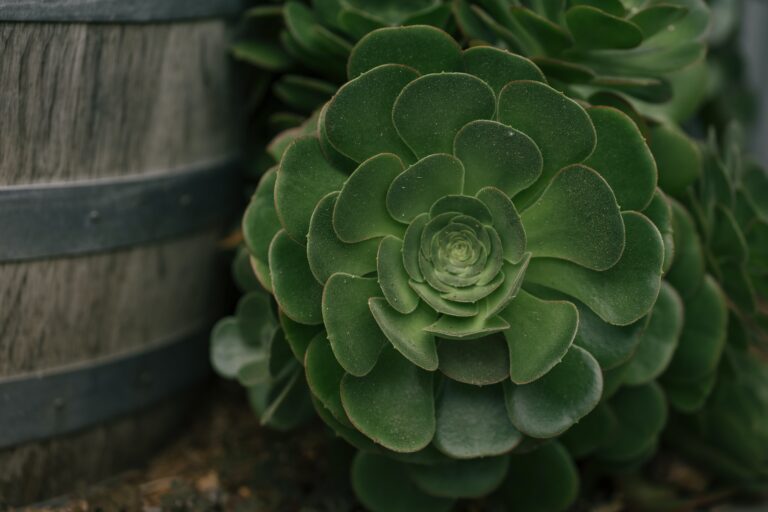
The temperature is no sweat, figuratively. This woolly charmer digs the regular indoor temps of 65-75°F (18-24°C). It’s chill with the occasional cold spell, but frost? That’s the grim reaper in disguise. So, just like you’d bundle up for a snow day, keep your succulent friend away from winter’s icy embrace.
Home placement? Ah, it’s not about the ‘where’ as much as the ‘how’. Indoors or launching a garden stint, ensure it’s living in a spacious pot with drainage faster than a sinkhole in the Sahara. And if you’re going outdoors, get it a patio with a view — sheltered from rain as these guys and excess moisture are feuding cousins.
To delve deeper into the heart of Senecio Haworthii, one might saunter over to The City Wild’s comprehensive care guide, where the nitty-gritty of this delightfully textured succulent is unfurled.
Think of cultivating Senecio Haworthii less like botanical science and more like matchmaking — find it the perfect spot, and you two will be growing old together, each day with a little more fluff.
Planting and Repotting Essentials
Hey fellow plant enthusiasts, are you ready to dive into the woolly world of Senecio Haworthii? This charming succulent, with its fluffy white leaves that seem to beg for a gentle touch, has a secret—it’s all about that base. Yes, we’re talking about the right soil mix and potting strategies that are pivotal for your Cocoon Plant’s prosperity. So, roll up your sleeves and let’s get into the nitty-gritty of creating the perfect home for your fuzzy friend!
Imagine this: You’re wearing your favorite sweater, the one that keeps you warm and cozy—your Senecio Haworthii seeks the same comfort but from its soil mix. What it craves is a well-draining concoction that mimics the arid environments of South Africa, where it hails from. Mix those porous materials like perlite or pumice with some organic potting soil to strike the right balance. This is the soil equivalent of a comfy sweater, providing both support and enough space for those roots to breathe and take up water efficiently.
Now let’s talk pots. It may not need a pot as stylish as an Italian suit, but it does need one that complements its needs. The mantra here is drainage, drainage, and once more for the succulents in the back, drainage. A terracotta pot with a drainage hole is like a first-class ticket for your Haworthii’s roots to thrive without the worry of root rot. Getting the size right is crucial, too—a cozy fit, not too spacious, encourages a snug root environment that fosters growth and vitality. A Goldilocks scenario, if you will.
But hold on, when do you enter the repotting rodeo? Timing is key. Does your plant seem to be outgrowing its space, or has it been a few years in the same pot? Then it’s probably time to give your plant a new stage to shine on. Early spring before the active growing season kicks in is prime time for this task, providing your plant with fresh soil and the chance to expand just as it’s hitting its growth spurt.
Remember to be gentle when repotting your woolly ward. Imagine transplanting a delicate treasure because that’s what your Senecio Haworthii is—a living gem. Nurture it, give it the soil it yearns for, the pot that ensures its well-being, and you’ll be rewarded with a plant that not only survives but thrives.
For more insights on nurturing your verdant buddies, take a peek at our ultimate guide to succulent soil. It’s a treasure trove of tips for perfect plant growth, minus the pitfalls!
The world of succulents is full of wonder, and with these planting and repotting essentials in your green-thumbed arsenal, your Senecio Haworthii will be living its best life. Thrive on, green warriors, thrive on!
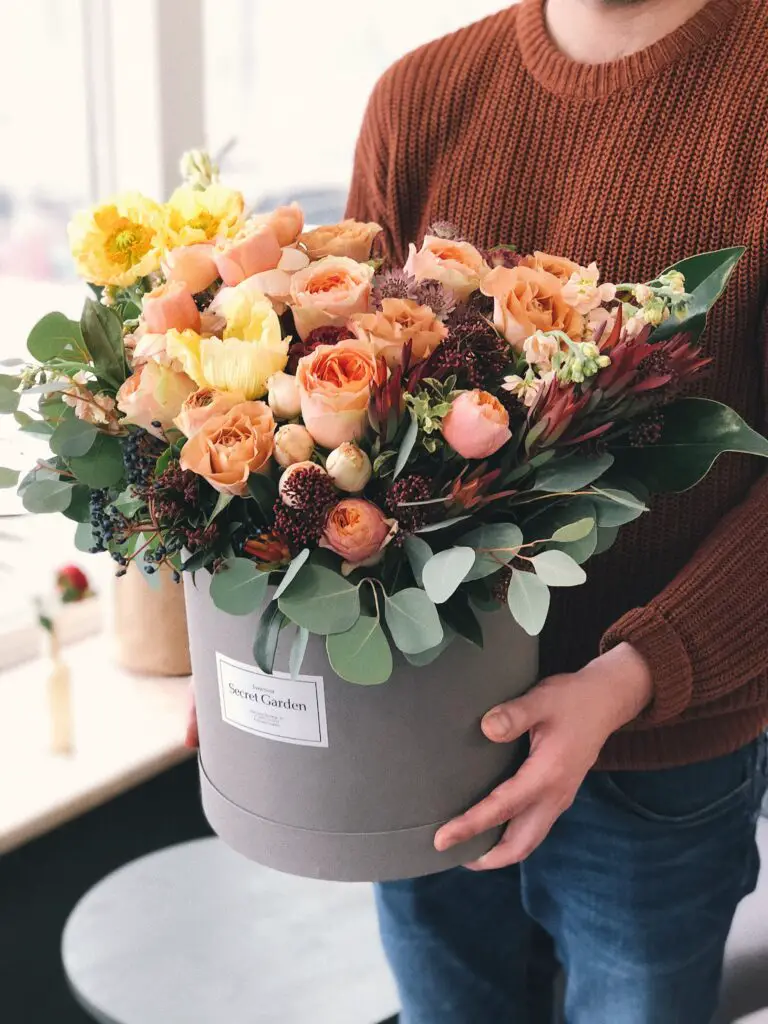
Watering and Feeding Your Senecio Haworthii
Keeping your Senecio Haworthii hydrated without overdoing it is a delicate balancing act. To prevent root rot, which can spell disaster for these drought-tolerant darlings, water only when the soil is completely dry. This usually means every couple of weeks, but let the season and climate be your guide. In the warmer months, your woolly friend will get thirstier than during the cooler, dormant season. And remember, your succulent’s container needs to have drainage holes to avoid water pooling at the bottom.
Now, let’s talk fertilizing – it’s like giving your Senecio Haworthii a little pep talk. These succulents aren’t greedy feeders, so a half-strength, balanced fertilizer applied during the growing season will satisfy their nutritional needs. Keep in mind, overfeeding can lead to unnaturally rapid growth and a weak, stretched-out plant that’s lost its charming compact form. Stick to feeding it once in spring and again in summer for the best results.
Imagine you’re creating the perfect blend of nutrients to mimic their high-altitude homeland in South Africa. Too much water, and they’ll send out an SOS! But get it right, and you’ll be rewarded with plump, happy leaves that make a statement in any succulent collection. Truly, watering and feeding your Senecio Haworthii is an art form that leads to a masterpiece of lush, silvery foliage and remarkable resilience.
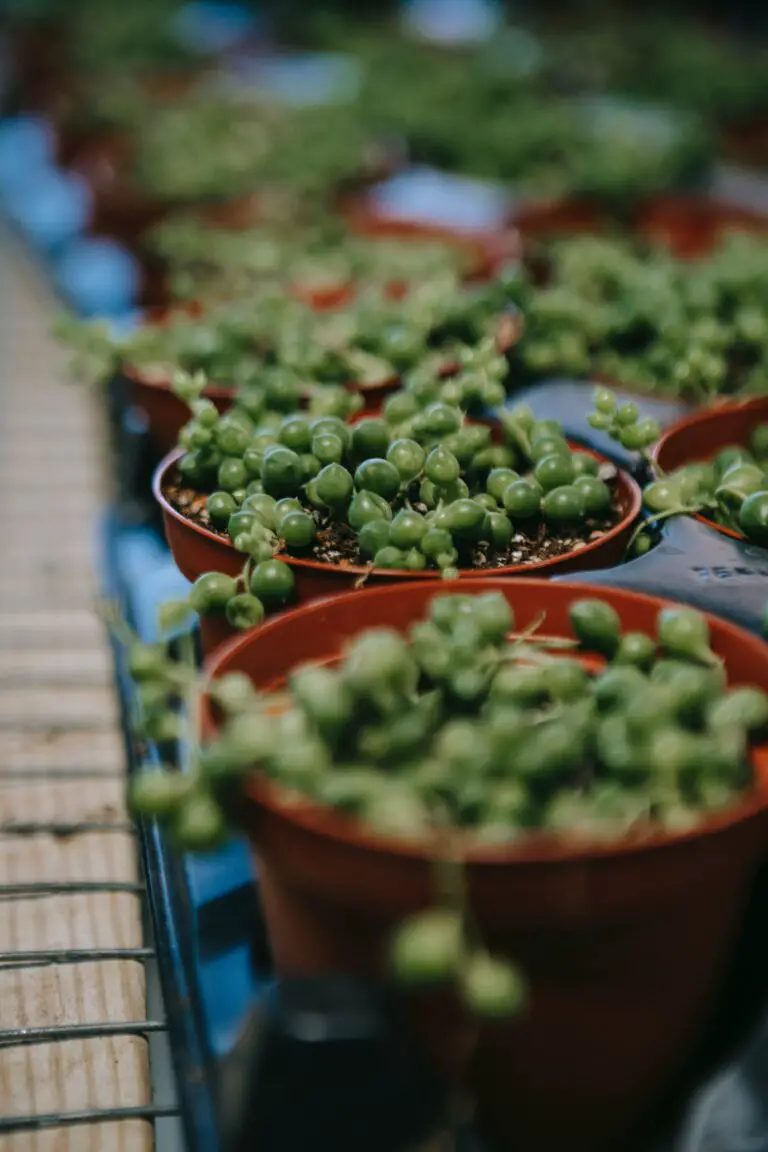
Practical Tips for Senecio Haworthii Care
Consider the environment your succulent lives in—a bright room with indirect light brings out the best in these woolly beauties, and maintaining that just-right level of moisture is paramount. Use your finger to dip into the soil; if it feels like the Sahara, it’s time to water; if it feels more like a damp marshland, hold off and let it dry. And when you feed your Senecio Haworthii, think of it as a fine dining experience; not too much and only with high-quality fertilizer to avoid a junk-food effect on your plants.
By monitoring and responding to the subtle cues of your Senecio Haworthii, you encapsulate the role of a nurturing plant parent. With these simple yet effective strategies, your fuzzy succulent buddies will thrive under your care, showing off their plush, uniquely textured leaves—a true testament to your green thumb!
Pruning and Maintenance
Imagine your Senecio Haworthii, also known as the woolly succulent, as the star of the show in your succulent collection. Just like any headlining act, it requires some behind-the-scenes work to keep it looking flawless. Pruning and maintenance, believe it or not, can be likened to a spa day for your precious plant.
Understanding the Basics of Pruning
First things first, let’s understand why pruning is essential. It’s not just about aesthetics; it’s a vital aspect of plant health care. Trimming off the spent leaves and overgrown stems does more than tidy up your plant; it encourages new growth and minimizes the risk of disease. It’s like cutting your hair to get rid of split ends—out with the old to make way for the new.

When to Wield the Shears
The perfect time to give your Senecio Haworthii a little trim is during its growing season, which typically spans from spring to early fall. During this period, the plant is in its prime, soaking up the sun’s energy and using it to flourish. Just think of it as getting ready for a summer body—it’s all about looking good in the peak season.
The How-To of Pruning
Grab your gardening shears and let’s get to work. You’ll want to start by removing any dead or dying leaves—these are the ones that have lost their luster. Next, look for any stems that are sticking out awkwardly or overcrowding the plant’s base, and give them a strategic snip. It’s like sculpting, but with a living, breathing masterpiece. Keep in mind, the goal is to enhance your succulent’s natural shape, not to create a topiary animal.
Post-Pruning Care
After you’ve played plant stylist, don’t forget the aftercare. Water your Senecio Haworthii sparingly, as overwatering can undo all your hard work and lead to root rot. Also, provide it with plenty of indirect light so it can heal and regrow with vigor. It’s much like after you’ve had a facial; you wouldn’t go sunbathing without protection. Treat your plant with the same tender care you’d give your own skin.
Maintenance: A Daily Routine
Maintenance isn’t a once-off affair; it’s more of a daily routine. Keep an eye on your plant for any signs of distress. It can be as simple as removing a fallen leaf or as crucial as adjusting its position to ensure it gets the right amount of light. Think of it as having a pet that doesn’t bark or meow but still communicates its needs in subtle ways.
Combating Pests and Diseases
Finally, keep an eye out for unwelcome visitors like aphids or mealybugs. These little critters can cause havoc on your Senecio Haworthii. Regularly inspect your succulent and take immediate action if you spot any pests. It’s akin to checking your beloved fur-baby for fleas—it’s essential for their health and happiness.
Armed with these pruning and maintenance tips, your Senecio Haworthii is set to thrive and become a show-stopper in your collection. Remember, a little love goes a long way, so don your gardening gloves and show your woolly succulent the care it deserves!
Troubleshooting Common Issues
Let’s talk Senecio Haworthii, also known as the woolly succulent, a little powerhouse amid succulent enthusiasts. However, even the toughest plants can encounter hiccups along their growth journey. By the end of our chat, you’ll be navigating the challenges of raising these beauties like a seasoned gardener!
Water Woes: Striking the Right Balance
If your Senecio Haworthii turns from plush to mush, you might either be underwatering or, paradoxically, loving it a little too much with water. Imagine this: You’re in a desert, parched and dreaming of rain, but then a thunderstorm floods you out. Your succulent feels the same with its watering needs—be the gentle rain, not the monsoon. The trick is to water deeply but rarely, allowing the soil to fully dry out between sessions. And always check for proper drainage; soggy bottoms are a nightmare for these fuzzy plants!

Sunburn and Shade: Finding the Sweet Spot
Here’s the sun conundrum: too much and your Senecio Haworthii gets a crispy tan; too little, and it grows lanky, reaching for a distant sun like a lost lover. They need bright light, but direct, scorching sun can be harmful. Place them where they’ll bask in indirect sunlight, like a spot shielded by a sheer curtain. It’s like applying SPF 50 to your succulent without the lotion!
Battling the Bug Brigade
Think of your Senecio Haworthii as a city under siege when pests attack. Mealybugs, spider mites, and aphids are your common invaders. Eradicating them early is key. Isolate the affected plant like a quarantine measure and treat with insecticidal soap or neem oil. Visualize yourself as the superhero here, swooping in to defend your green city from tiny villains!
Remember, Senecio Haworthii owners, that troubleshooting isn’t about perfection; it’s about adaptation and learning. With a little patience and some detective work, you’ll have your woolly succulents thriving. Stay observant, stay persistent, and above all, stay green-thumbed!
Propagation Pro-Tips
Attention green thumbs and woolly succulent enthusiasts! Dive into the incredible world of Senecio Haworthii propagation, where you can multiply your fuzzy friends and fill your space with these unique plants. Propagation isn’t just a science; it’s an art form where you turn one plant into many. Let’s embark on this transformative journey together!
Imagine you’ve got your hands on a plump, healthy Senecio Haworthii. Its silvery-white leaves are almost luminous in the sunlight. You think to yourself, “It’s time to create more!” First things first, choose your method: leaf cuttings, offsets, or stem cuttings – each pathway promising its own exciting adventure in succulent multiplication.
For leaf cuttings, gently twist a leaf from the stem. It should come away clean, with no part left on the stem. With a bit of patience, this single leaf will amaze you as tiny roots reach out like delicate threads, searching for soil. Place the leaf on top of well-draining succulent mix and marvel as a miniature Senecio Haworthii eventually sprouts, eager to grow.
If your plant is already cozying up with a bunch of offsets—little clones of itself huddling at its base—then you’re in luck! Carefully separate these offsets, ensuring each has some roots attached, and pot them up. With proper care, these youngsters will flourish, creating their own silvery landscapes in no time.
Stem cuttings are for the bold and the brave. Cut a healthy stem, allow it to callus over for a day or two to prevent rot, and then nestle it into succulent soil. Water sparingly, and before long, your stem cutting will take root, standing proud as a new individual.
Regardless of your chosen method, remember the golden rule: less is more when it comes to watering. These succulents hate wet feet, so keep the soil on the dry side and provide plenty of indirect light. After all, you want to pamper your propagated plant babies, not drown them.
Need a visual guide? Check out this helpful video on propagating your Senecio Haworthii. It’s like having a propagation mentor right in your living room!
Remember, everyone’s propagation journey is a little bit different. Embrace the quirks and peculiarities of your plants. A leaf might sprout from an unexpected spot, or an offset might take its sweet time to grow. It’s all part of the wonderful world of Senecio Haworthii propagation!
So, gather your gardening gloves, find that perfect leaf or stem, and get ready to expand your succulent sanctuary. Propagation is a rewarding experience that deepens your connection with your plants and nature. Let’s grow together!
Designing with Senecio Haworthii
Incorporating Senecio Haworthii, or as they are affectionately known, ‘Woolly Senecio,’ into your home decor can transform the ambiance of your space with a touch of nature’s artistry. Imagine the silvery-white, cylindrical leaves bringing a futuristic yet soft texture to a minimalist modern living room. This succulent isn’t just a plant; it’s a statement piece that harmonizes with diverse design themes from rustic chic to Scandinavian cool.
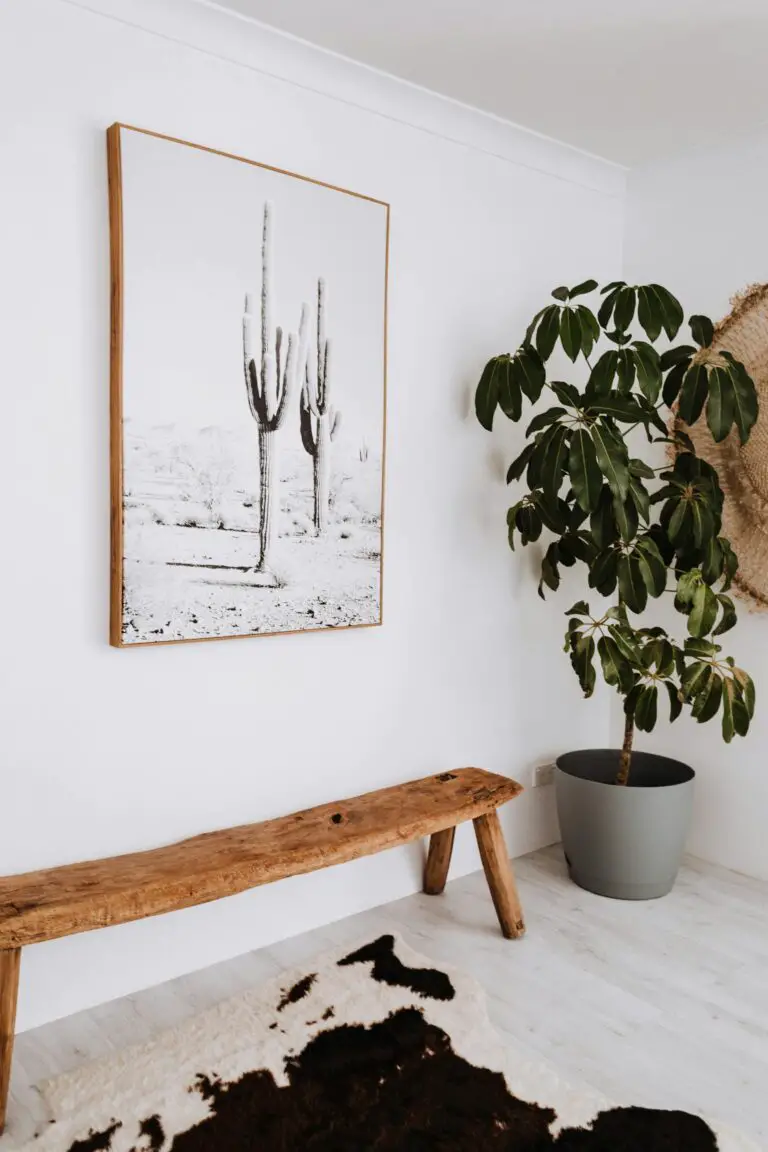
Think of the Woolly Senecio as more than just a potted plant on a windowsill. Envision it as part of a larger botanical arrangement on a floating shelf alongside terracotta pots of varying sizes, creating a dynamic and eye-catching display. Place it in a hanging terrarium, and watch as it adds a new dimension to the room, gracefully suspended in the air like a chandelier of greenery. Or, nestle it amongst a collection of books and travel mementos, where its unique texture begs to be admired up close.
The adaptability of Senecio Haworthii extends beyond the shelves and tabletops of your home’s interior. Picture this: a serene outdoor patio where the Woolly Senecio sits atop a repurposed wooden ladder, contrasting with the rugged grain of the wood, and providing a fresh focal point amidst the warm tones of the garden. It integrates seamlessly, proving that succulents are not only for arid environments but can clinch the essence of a modern oasis anywhere.
For those with a flair for the bold, incorporating the Woolly Senecio in bathroom designs can elevate a typically overlooked space. Paired with a sleek, geometric mirror and the soft glow of a Himalayan salt lamp, it cultivates a sanctuary that resonates with both vitality and tranquility. It’s this versatility and ability to thrive with minimal care that makes Senecio Haworthii the perfect canvas for your design innovations, whether you’re a seasoned interior designer or a home decor enthusiast looking to spice up your living space.
And let’s not forget the value of texture in landscape design. The soft, wool-like leaves of the Senecio Haworthii add an unexpected element that pairs beautifully with the rugged beauty of stone pathways or the sharp lines of a modern water feature. Whatever your vision, the Woolly Senecio is sure to thrive, inviting looks of admiration and sparking conversations about its otherworldly appearance.
Senecio Haworthii and Plant Companionship
Just like people, plants thrive when they’re in good company. The concept of companion planting isn’t new, it’s been practiced in gardens for centuries. For the lovable Woolly Senecio, or Senecio Haworthii, choosing the right plant friends can mean the difference between just surviving and absolutely thriving.

Imagine you’re at a social gathering. You naturally gravitate towards people with similar interests, those who offer engaging conversation, and folks who bring out the best in you. Senecio Haworthii operates much the same in the garden world. It prefers companions who share its love for sunny spots and don’t hog all the moisture. Mediterranean herbs like lavender and rosemary make excellent neighbors, as their watering needs are similar and they help deter pests with their strong scents.
Finding the Perfect Match
Take a page from the plant matchmaking book and think about physical compatibility. Plants with shallow roots systems live harmoniously alongside the Woolly Senecio, allowing each to have their fair share of the soil’s nutrients and water. Sempervivums, also known as hens and chicks, are quite the catch for this succulent; their compact form and non-invasive nature mean they won’t crowd your Woolly friend.
Benefits of Befriending the Right Plants
Choosing the right companions for your Senecio Haworthii isn’t just about aesthetics. It’s a strategic move to build a mini-ecosystem where all plants support each other’s growth. Aloe vera, for instance, not only shares similar care requirements but also adds a protective layer, with its antibacterial properties helping to keep harmful pathogens at bay.
As you ponder which plants to pair with your Woolly Senecio, remember to prioritize their shared needs and benefits. With a bit of plant wisdom and a dash of creativity, you’ll curate a lush, vibrant garden where Senecio Haworthii and its companions live in perfect harmony. Remember, in the garden of life, every plant has its place, and finding the right neighbors for your succulent is key to creating a thriving garden oasis.
Environmental Benefits and Uses
Welcome to a greener perspective on Senecio Haworthii, the plush, white-felted succulent that’s making waves in eco-friendly circles! Known for its intriguing texture and robust form, this woolly wonder is not just a pretty face in the plant kingdom—it’s a champion of sustainability and versatility.
Lush in appearance yet drought-resistant, Senecio Haworthii plays a pivotal role in water conservation efforts. Its thick, tubular leaves store water, allowing it to thrive in arid climates where other plants would wither. Inside your home, this succulent serves as a verdant reminder of nature’s resilience, needing only occasional sips of water to maintain its charm. Imagine converting a barren balcony or lifeless corner into a mini oasis with these hardy beauties—it’s an eco-conscious choice that’s both aesthetic and practical.
But it’s not just about good looks and low maintenance. Outdoor, Senecio Haworthii welcomes a symphony of biodiversity. When planted in gardens, it offers a sanctuary for pollinators, especially during the lean months when few other plants are in bloom. Picture these woolly succulents as bustling hubs for buzzing bees and flittering butterflies, enlivening your garden with movement and pollination performance.

Moreover, in the sphere of practical uses, these succulents have found their way into the hearts of herbal remedy enthusiasts. While not as commonly used as some of their plant siblings, parts of Senecio Haworthii have been employed in traditional medicine to address a variety of ailments. In local communities, they’re sometimes used as an ingredient in soothing ointments and even home decor—think of a natural, textured element that adds depth and tranquility to your living space.
Have a passion for DIY projects? This woolly succulent is a dream ingredient for creating sustainable, living art installations. With its unique appearance, it stands out in terrariums, green walls, and tabletop arrangements, adding a touch of sustainable luxury to any space.
All in all, Senecio Haworthii is more than an ornamental plant—it’s a testament to nature’s ingenuity and its endless potential to enrich our lives, our gardens, and our planet. Embrace the woolly world of this succulent, and let it transform both your home and garden into an eco-friendly retreat.
Frequently Asked Questions
When it comes to cultivating Senecio Haworthii, every enthusiast has questions that bubble up like water in a well-drained potting mix. Let’s quench your curiosity with top-notch advice that’ll turn your green thumb even greener!
What Does My Senecio Haworthii Need to Thrive?
Imagine a plant that yearns for the sun like beach-goers on a summer day—that’s Senecio Haworthii for you. These sun-worshipping succulents crave bright light but prefer to avoid the harsh afternoon rays, much like a fair-skinned sunbather might. Ensure they bask in indirect sunlight to emulate the warm embrace of their native South African highlands.
How Often Should I Water My Woolly Wonder?
It’s a common scene: an overzealous plant parent with a watering can causing a mini monsoon. However, your woolly ward is more of a sip-and-go type—they like their soil like a well-drained path after a light rain. Allow the soil to dry out completely between waterings and then provide a deep drink, just like refreshing rain following a drought.
When Is It Time to Re-pot?
Think of re-potting like moving to a new home—it should be roomier and just as cozy. Your Senecio Haworthii will give you a signal, gently whispering (or, more accurately, showing) that it’s time to upgrade its living quarters when roots peek through the drainage holes. Typically, this house-hunting happens every two to three years.
Can I Propagate My Senecio Haworthii Easily?
Yes, indeed! Taking a leaf-cutting is like helping your plant have a mini-me. Simply snip a healthy leaf, let it callous over for a day or two to prevent any “ouchies,” and then nestle it atop a welcoming bed of potting mix. With minimal fuss and a bit of patience, you’ll witness the miracle of new growth sprouting.
Ready to spot Senecio Haworthii in action? Feast your eyes on this:

Got more burning questions? Keep them coming! Our woolly friends are as intriguing as they are fluffy, and there’s always more to learn. Happy growing!



